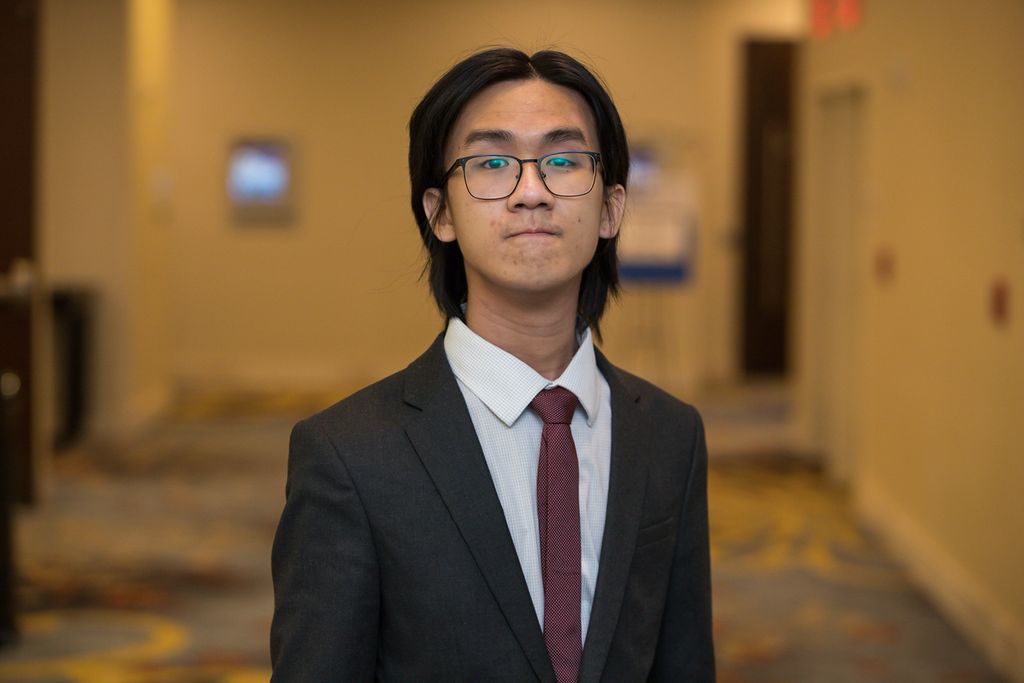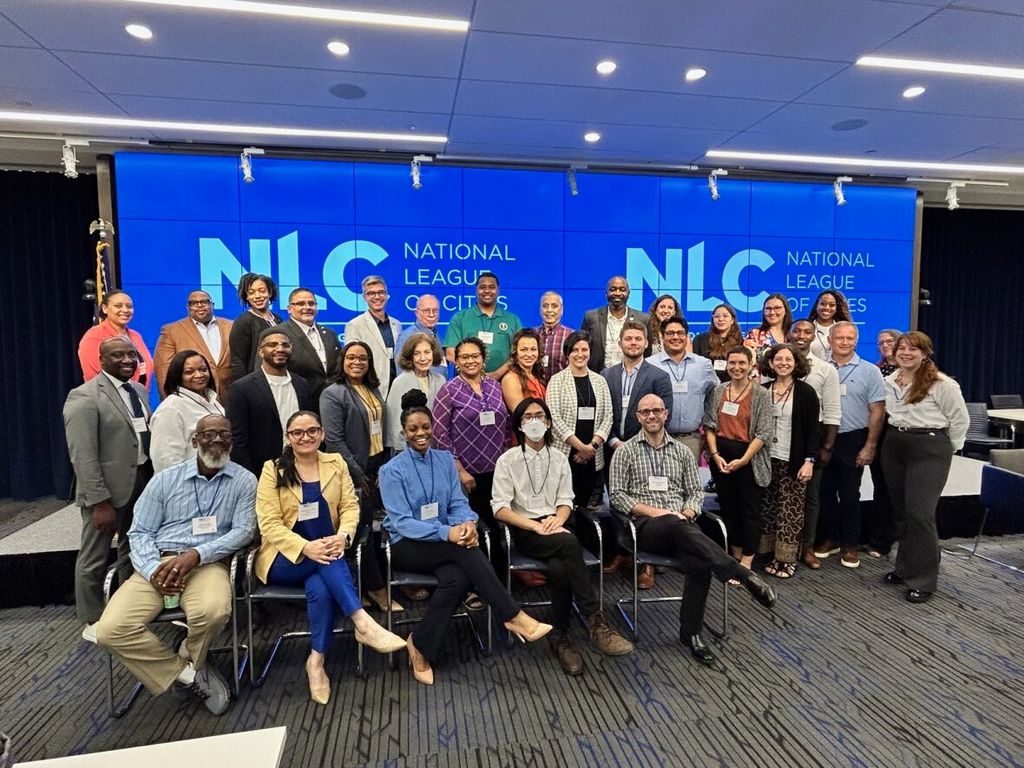An Pham: Reflecting on my 2022–2023 NLC Menino Fellowship
 I had a fantastic experience being the 2022–2023 National League of Cities Menino Fellow. I went in with a summer’s experience from another IOC Fellowship, half of an economics degree, and scattered convictions about cities. I’m leaving as a staunch urbanist after exploring those convictions and finding names for the ones that made sense by the end. This is a glimpse into my year-long dive into urban policy.
I had a fantastic experience being the 2022–2023 National League of Cities Menino Fellow. I went in with a summer’s experience from another IOC Fellowship, half of an economics degree, and scattered convictions about cities. I’m leaving as a staunch urbanist after exploring those convictions and finding names for the ones that made sense by the end. This is a glimpse into my year-long dive into urban policy.
Fall Semester: My Directed Study
The first half was a Directed Study under Professor Loretta Lees, the Director of the Initiative on Cities. I studied Boston’s history of housing policy from the post-World War II era to the 1990’s. Instead of a dry look at zoning codes, I got a crash course on how the era’s rapid social changes shook Boston’s institutions, communities, and residents.
Car culture enabled sprawling suburbs, demanded highways that essentially split Black communities, and shifted economic activity to car-based cities. Boston was already suffering as manufacturing left the Northeast and Midwest in the 1930’s. Boston bled tax dollars as the federal government financed cheap mortgages for single-family homes and as white families and private investment moved to the growing suburbs.
The racist idea of urban blight also took hold. Through the 1950s, federal policies like the 1949 U.S. Housing Act allowed cities to buy “blighted property” at a discount and sell it to developers. Boston used eminent domain to evict thousands of low-income Black residents. Redlining prevented them from taking loans that could have repaired their “blighted” homes or let them move stably to other neighborhoods. Once they were evicted, Boston didn’t have enough public housing and private, affordable housing for them.
In short, Boston joined other cities pursuing “urban renewal.” The approach was to bulldoze and displace poor communities while denying anyone who remained the investment needed to escape poverty. Just as every federally supported suburban home created generational wealth for a specific class of Americans, every locally-driven displacement added to the national racial wealth gap. Racist selling practices and covenants sealed the picket fence. Policymakers across the country tore the economic and social fabric of Black urban communities, using increasingly racial images of poverty and crime to justify further discrimination. It shapes any discussion of American urban poverty and policy to this day.
Specific to Boston, though, I studied how four institutions shaped the era.
- The federal government’s agendas gave each institution new opportunities and constraints, from social welfare funding to regulations against housing discrimination.
- City Hall struggled to rebuild Boston’s tax base by attracting private investment into rapidly gentrifying communities and new business districts.
- The Boston Redevelopment Authority (BRA) gained unprecedented powers under planner Ed Logue and the mission of urban renewal.
- The Boston Housing Authority shifted from mostly serving middle-income, white residents — the “worthy poor” — to low-income Black residents. It faced its version of Boston’s tax problem as it lost rent from white residents, cut funding while serving newly displaced Black residents, and became undesirable to those same white residents.
However, the Civil Rights movement and activists trained during it put pressure on every level of government. I loved learning about how communities built their own institutions, shaping Boston’s politics just as much as City Hall did.
Some examples were:
- Community development corporations and land trusts (CDCs and CLTs) that bought land and created their neighborhood plans: BRA planners sometimes looked down on them but just as often relied on them for affordable housing. My final essay was on how a diverse Roxbury community created the Dudley Street Neighborhood Initiative.
- Community activists ranging from moderate landowners to radical tenant groups: Boston slowly institutionalized their interests through public meetings, diverse hiring on BHA boards, and Mayor White’s “Little City Halls.”
Spring Semester: Internship with the National League of Cities

The second half of the Menino Fellowship took me to Washington, D.C. I interned with the National League of Cities (NLC) while taking evening classes through BU’s DC program. It was dizzying to work across three policy teams, but it was wonderful to have three kind managers/mentors.
For NLC’s Early Childhood Success team, I profiled cities we worked with to see if their climate change, housing, and healthcare policies could connect to our agenda for supporting children. For the Health and Wellness team, I researched the current state of affordable housing policies and presented my work to the team. It was exciting to update others on my niche interest and provide background research for a major grant proposal.
For the Economic Opportunity and Financial Empowerment team, I conducted background research on racial reparations, progressive city treasurers, and tax scavenger sales. Some became internal briefs for NLC members and city officials I spoke with. A much larger portion went to CAFFE, a project with cities trying to reform their fines and fees. I learned about gaps in city data, reform efforts across the country, and the local context of each city. A highlight was presenting maps I made on a call with the entire CAFFE cohort to explain how to measure and visualize racial disparity.
The Fellowship allowed me to dive into a field I love. It taught me how practitioners read, research, and talk. Every city has a chaotic amount of information, and NLC makes sense of it on a national level. Each jargony-term in this blog is an entire subfield of policy. I don’t see myself in every office, but I’m seeing the process of change more clearly. It means a lot to know that there’s room for someone like me throughout that process. Despite concluding my fellowship at the end of the spring semester, I continued my work at NLC until my senior year began in September. I know this Fellowship is going to impact whatever I do after that.
Special thanks to Loretta Lees, David Gross, Patrick Hain, and Denise Belser.

If you’re interested in exploring more, these were my favorite reads during my Fellowship:
- The Death and Life of Great American Cities, Jane Jacobs
- The Color of Law: A Forgotten History of How Our Government Segregated America, Richard Rothstein
- The Community Land Trust Reader, John Emmeus Davis
- From Redlining to Reinvestment: Community Responses to Urban Disinvestment, Gregory Squires
- The Hub’s Metropolis: From Railroad Suburbs to Smart Growth, James O’Connell
In Spring 2024, An was featured in our Menino Fellowship Showcase & Info Session. Watch a recording below: